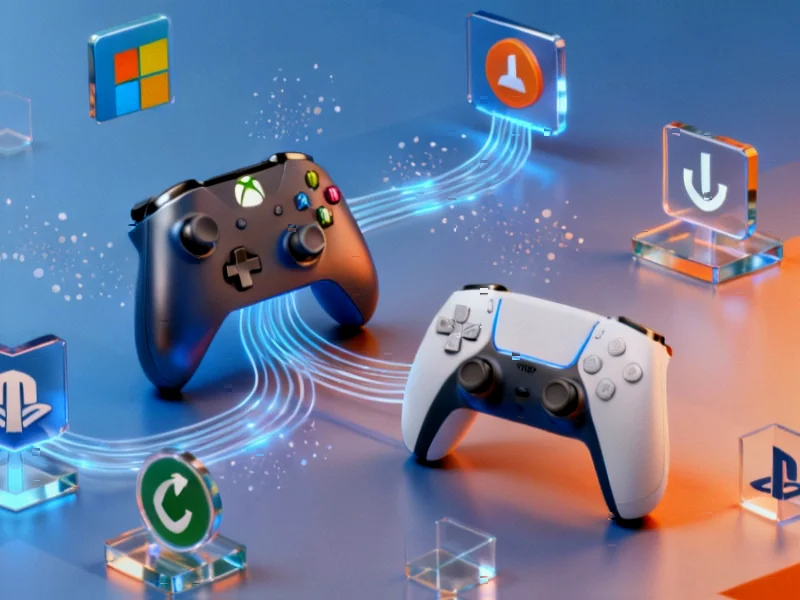Microsoft’s gaming division is undergoing its most dramatic transformation in decades, with the company making the once-unthinkable decision to bring its flagship Halo franchise to PlayStation while simultaneously implementing aggressive profit-maximization strategies across its Xbox ecosystem. This week’s developments reveal a company caught between platform exclusivity traditions and the harsh realities of modern gaming economics.
Table of Contents
The End of an Era: Halo Comes to PlayStation
After months of industry speculation, Microsoft has officially confirmed that Halo: Campaign Evolved—a ground-up remake of the original Halo: Combat Evolved—will launch on PlayStation 5 in 2026 alongside Xbox and PC versions. This marks the first time a mainline Halo title will appear on a Sony platform, effectively ending one of gaming’s most enduring exclusivity arrangements.
The strategic implications are profound. “This isn’t just another multiplatform release—it’s Microsoft acknowledging that the console exclusivity model has fundamentally changed,” says gaming industry analyst Michael Pachter. “When your flagship franchise, the one that literally built your console business, goes multiplatform, you’re signaling a complete rethinking of your gaming strategy.”
Microsoft’s move follows similar cross-platform experiments with smaller titles like Sea of Thieves and Grounded, but Halo represents the crown jewel of Xbox’s first-party portfolio. The timing is particularly notable given Sony’s own recent multiplatform pushes with games like Helldivers 2. What we’re witnessing is the gradual erosion of the walled-garden approach that has defined console gaming for decades.
Profit Pressure Reshapes Xbox Business
Meanwhile, Microsoft’s gaming division is facing intense internal pressure to deliver profitability. According to reports, CFO Amy Hood has mandated a demanding 30% profit margin target for Xbox, driving a series of price increases that are reshaping the platform’s economics.
The latest casualty? Game developers themselves. Microsoft has reportedly increased Xbox Development Kit prices by a staggering 33%, pushing the cost to $2,000 per unit. This comes on the heels of recent Xbox console price hikes and Game Pass subscription increases, creating a perfect storm of rising costs across the Xbox ecosystem.
“When you start charging developers more for the privilege of making games for your platform, you’re fundamentally changing the value proposition,” notes Sarah Chen, technology analyst at FutureTech Insights. “This could potentially push smaller studios toward PlayStation or Nintendo platforms where development costs remain more manageable.”
Windows Refinement Continues Amid Security Concerns
While gaming strategy dominates headlines, Microsoft continues its methodical refinement of Windows 11. This week brought out-of-band updates addressing USB peripheral issues and security patches for smart card authentication vulnerabilities. Notably, Microsoft disabled the Preview Pane for internet-downloaded files to prevent NTLM hash leaks—a security measure that reflects growing concerns about Windows vulnerability.
The company also published new guidance highlighting the severe security risks for users remaining on Windows 10, which officially reached end-of-support last week. “Microsoft is walking a tightrope between pushing users toward Windows 11 and acknowledging the privacy concerns that come with its default BitLocker encryption,” observes Chen. “Their support documentation increasingly reads like a carefully worded legal disclaimer.”
AI Arms Race Intensifies
Microsoft’s Copilot division isn’t standing still either. The company unveiled what it’s calling the “Fall Update” for its AI assistant, directly targeting competitors ChatGPT and Gemini with features like Copilot Memory, Copilot Groups, and even a nostalgic throwback—Clippy integration through the new “Mico” avatar.
The AI push extends to consumer applications too, with Paint receiving new “Restyle” AI features in Windows Insider builds. “Microsoft is betting heavily that AI differentiation will drive Windows adoption,” says Pachter. “But they’re facing the same challenge as everyone else—making these features feel essential rather than gimmicky.”
Market Implications and Future Outlook
Microsoft’s simultaneous platform expansion and profit-maximization efforts reflect a company in transition. The Halo-to-PlayStation move suggests Microsoft may be prioritizing software revenue over hardware ecosystem lock-in, while the price increases indicate serious pressure to justify the $68.7 billion Activision Blizzard acquisition.
“What we’re seeing is Microsoft treating gaming more like a traditional software business and less like a platform war,” Chen explains. “The question is whether players and developers will accept the new economics, especially as competing platforms like PlayStation and PC offer alternative value propositions.”
Looking ahead, the success of Halo on PlayStation could determine whether other Xbox exclusives follow suit. If the financial returns justify the strategic shift, we might see franchises like Gears of War or even future Bethesda titles appearing on competing platforms. Meanwhile, the profit pressure on Xbox could accelerate Microsoft’s cloud gaming investments as the company seeks more scalable distribution models.
One thing is clear: the Microsoft of 2025 looks radically different from the company that entered the gaming market 24 years ago with the original Xbox. The walls between platforms are crumbling, and business models are evolving faster than ever. For gamers and industry watchers alike, we’re witnessing the beginning of a new era in interactive entertainment—whether the market is ready for it or not.



